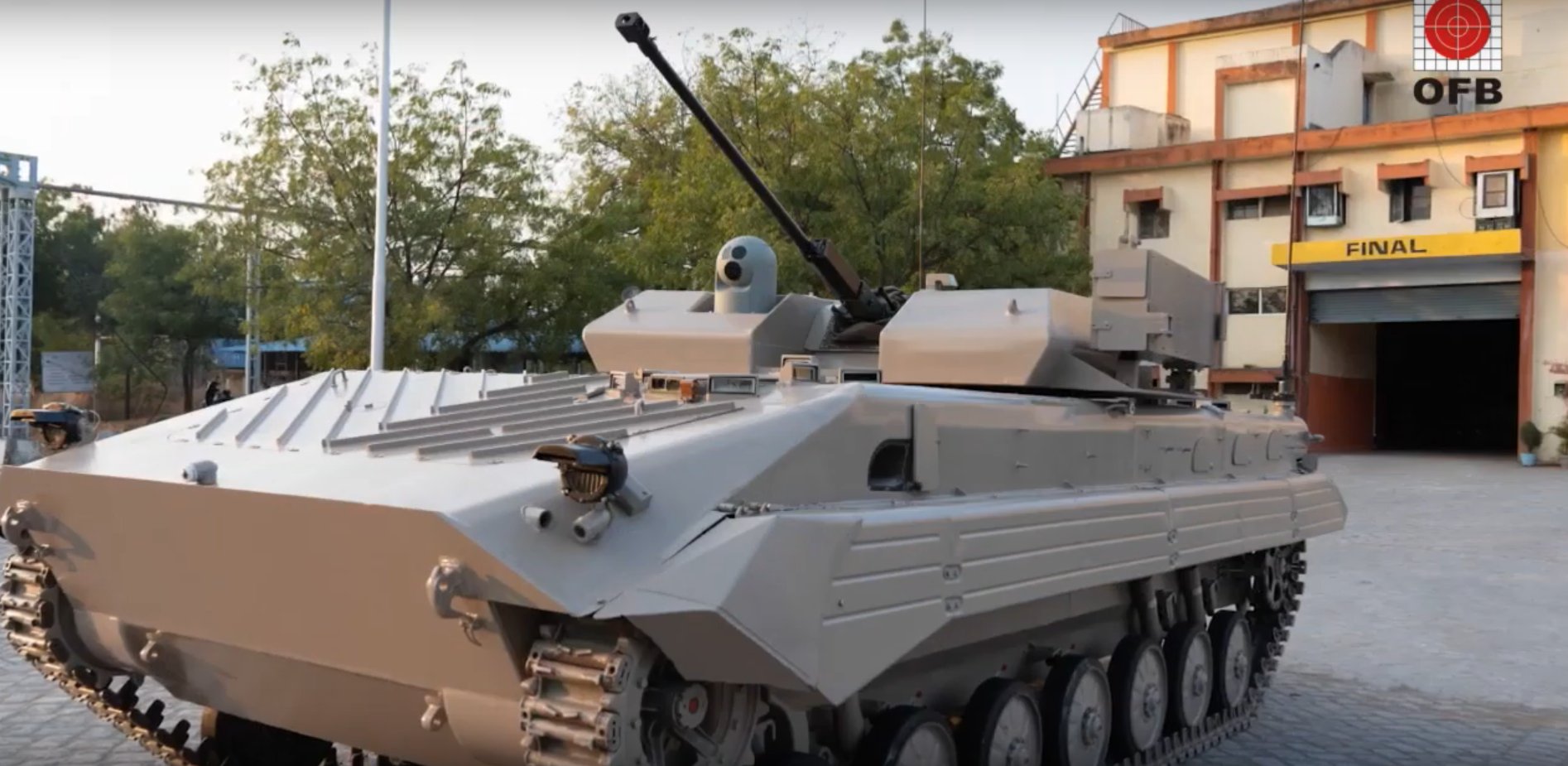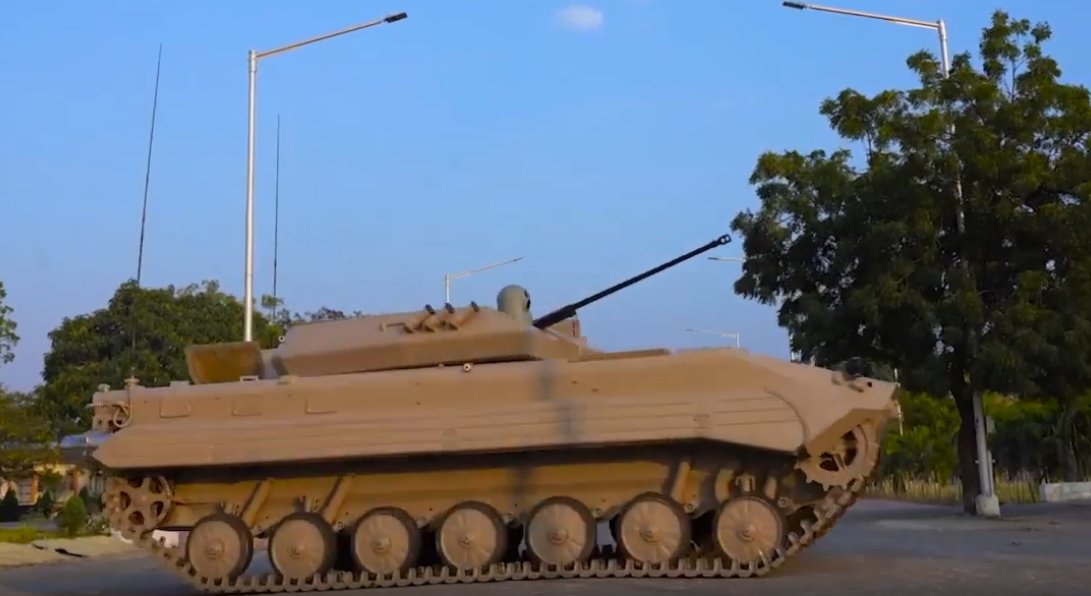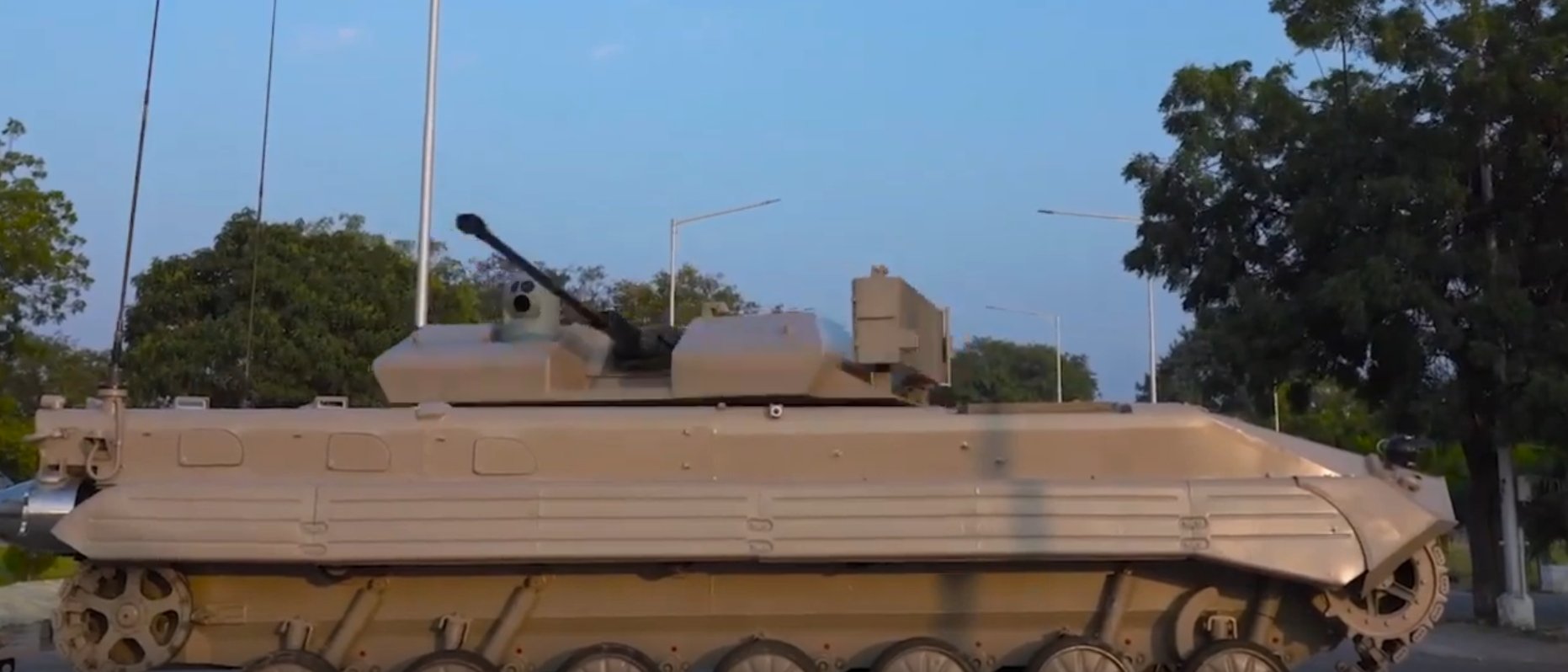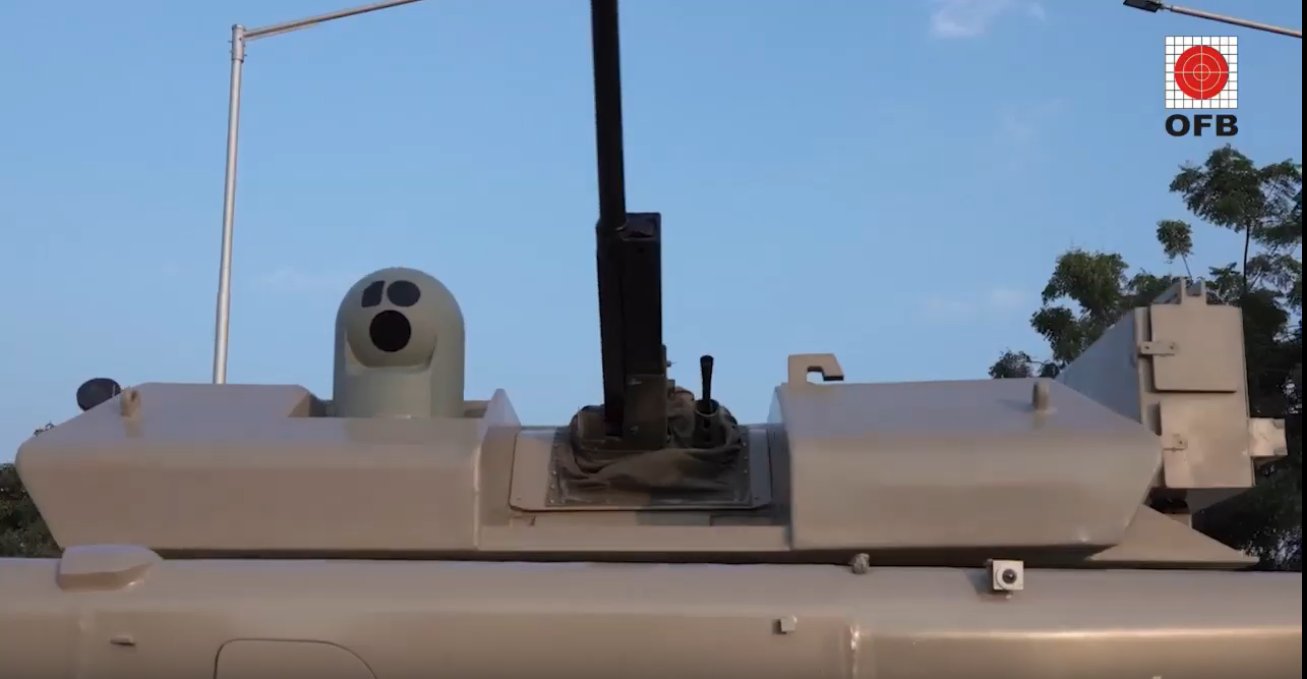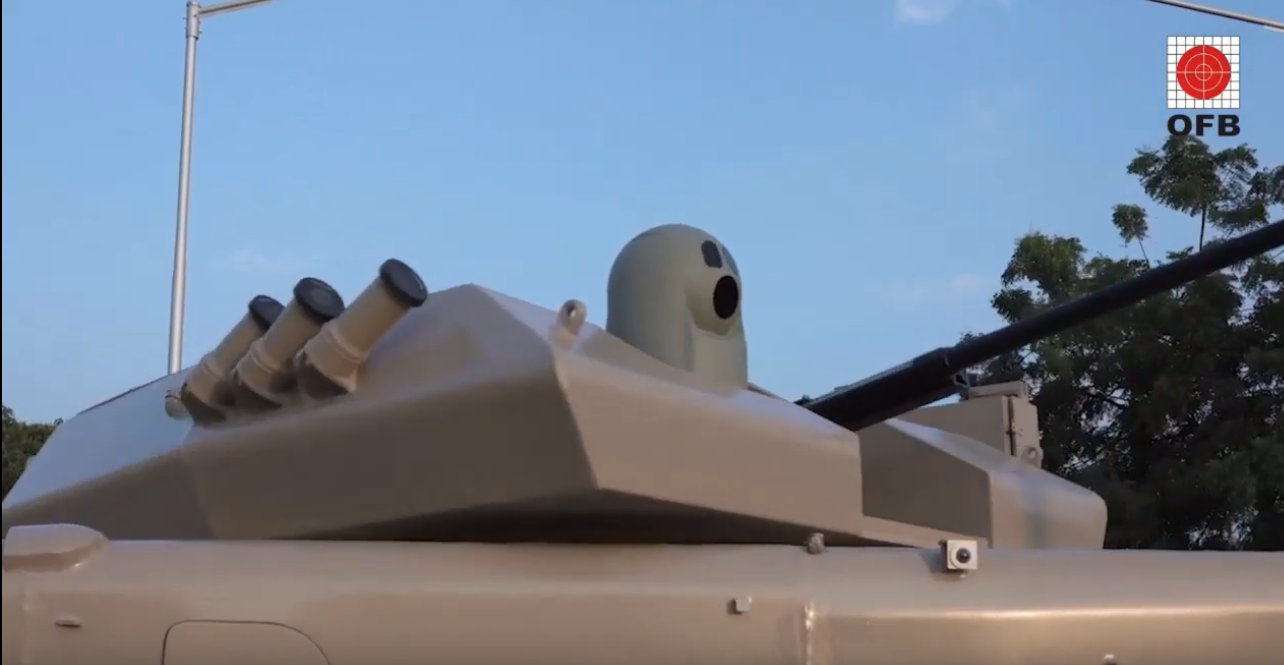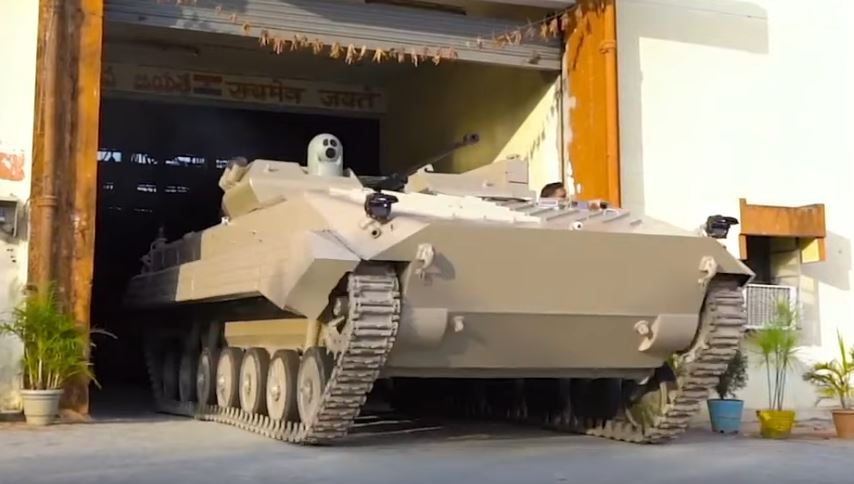This Indian Combat Vehicle Impressed No One
A minor surprise that preceded DEFEXPO 2020, which is India’s
largest biennial arms show, was the Ordnance Factory Board’s (OFB) reveal for its Future Infantry Combat Vehicle (FICV) to meet the Indian Army’s requirement. The OFB shared a video clip on its social media channels highlighting the FICV’s features. These span an enlarged hull equipped with hydrojet propellers that allow it to swim across bodies of water. The turret is armed with a 30mm cannon and a 7.62mm coaxial machine gun. A rectangular module on the turret’s side is supposed to carry two anti-tank missiles.
It’s obvious the appearance of the FICV prototype developed by OFB Medak is based on the BMP-2, which has been under licensed production since the 1980s and designated the Sarath, but with significance changes. The hull of the FICV is lengthened and carried by seven road wheels on each side. The road wheels and their tracks, by the way, are the same as those on a BMP-2. The inclusion of side skirts and the choice for main armament recall the BMP-2 as well. The Indian Army maintains over 2,000 Sarath and the OFB used its hull as the basis for other tracked vehicles such as an anti-tank missile carrier and numerous prototypes over the years.
But the video clip of this new FICV exposed a little too much. A segment that emphasized the 30mm 2A42 cannon revealed the driver’s hatch was poorly fitted and askew–suggesting the FICV in its current incarnation is a mere prototype. The twin propellers at the back of the vehicle retained their silver finish, meaning they haven’t been painted to match the vehicle’s color scheme. There are problems with the turret’ layout too. Foremost are the empty module for anti-tank missiles. The Indian Army still hasn’t fielded
a next-generation ATGM developed by the DRDO. This means it’s unclear if the FICV is meant to carry the Russian Konkurs, which are locally made by another Indian state-owned manufacturer, or a local equivalent at some point. Concealing the launcher in a compartment at the back of the turret, rather than attache don the side, is a practical alternative among IFVs today such as the German-made Lynx and the UK/Swedish CV-90.
The choice of a 2A42 cannon is also suspect when the OFB claims its latest effort boasts unmatched firepower. The Indian Army must consider alternatives to its existing 30mm cannon since Russia and the USA have developed 57mm and 50mm cannon, respectively, for their existing infantry fighting vehicles. With the Indian Army engaged in a long-term rivalry with China, whose
armored vehicle technology now surpasses what NATO has, it can’t afford to be outgunned when the PLA have 30mm and 100mm calibers at their disposal. There needs to be improvements on the FICV’s weapon suite as its development process moves forward. If not, the Indian Army along with the defense ministry may opt for another deal with Russia to upgrade the existing Sarath and enhance its firepower.
Another drawback is the choice of fire control system and its accompanying optics. Only a single pivoting thermal sight is mounted on the turret while similar vehicles have these installed by twos. In other tracked infantry vehicles, the gunner’s sight is often fitted near the main armament while the commander has a pivoting sight on the turret roof. The past decade saw a resurgence in tracked fighting vehicles that maximize firepower, internal capacity, and protection. The the FICV looks like it lags behind in each category. The OFB claims the FICV’s protection level reaches STANAG IV, or able to resist armor piercing small arms ammunition, but how the armor is distributed isn’t explained. Going by the new infantry fighting vehicles from Russia and Israel, for example, the Kurganets-25 and the Namer are encased in modular add-on panels and have thick sideskirts concealing their tracks. Not the FICV, though.
Even in the face of the
army’s preference for importing expensive weapon systems, the FICV can prove successful in the medium-term. OFB Medak’s capacity and expertise are beyond doubt and there are numerous roles waiting for an FICV that enters mass-production.
A minor surprise that preceded DEFEXPO 2020, which is India’s largest biennial arms show, was the Ordnance Factory Board’s (OFB) reveal for its Future Infantry Combat Vehicle (FICV) to …

21stcenturyasianarmsrace.com
.



